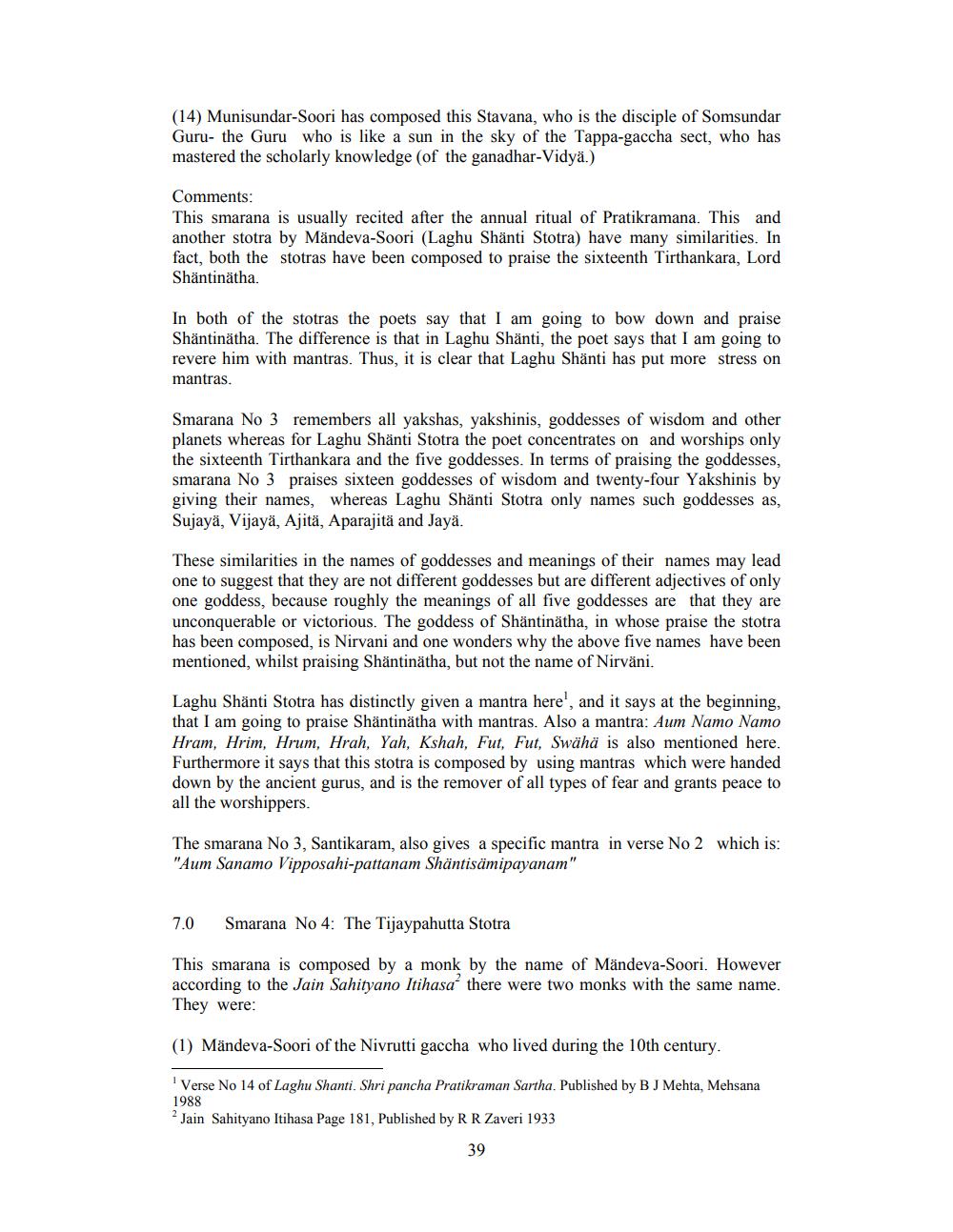________________
(14) Munisundar-Soori has composed this Stavana, who is the disciple of Somsundar Guru- the Guru who is like a sun in the sky of the Tappa-gaccha sect, who has mastered the scholarly knowledge (of the ganadhar-Vidyä.)
Comments: This smarana is usually recited after the annual ritual of Pratikramana. This and another stotra by Mändeva-Soori (Laghu Shänti Stotra) have many similarities. In fact, both the stotras have been composed to praise the sixteenth Tirthankara, Lord Shäntinätha.
In both of the stotras the poets say that I am going to bow down and praise Shäntinätha. The difference is that in Laghu Shänti, the poet says that I am going to revere him with mantras. Thus, it is clear that Laghu Shänti has put more stress on mantras.
Smarana No 3 remembers all yakshas, yakshinis, goddesses of wisdom and other planets whereas for Laghu Shanti Stotra the poet concentrates on and worships only the sixteenth Tirthankara and the five goddesses. In terms of praising the goddesses, smarana No 3 praises sixteen goddesses of wisdom and twenty-four Yakshinis by giving their names, whereas Laghu Shanti Stotra only names such goddesses as, Sujaya, Vijayä, Ajitä, Aparajitä and Jaya.
These similarities in the names of goddesses and meanings of their names may lead one to suggest that they are not different goddesses but are different adjectives of only one goddess, because roughly the meanings of all five goddesses are that they are unconquerable or victorious. The goddess of Shäntinätha, in whose praise the stotra has been composed, is Nirvani and one wonders why the above five names have been mentioned, whilst praising Shäntinätha, but not the name of Nirväni.
Laghu Shanti Stotra has distinctly given a mantra here', and it says at the beginning, that I am going to praise Shäntinätha with mantras. Also a mantra: Aum Namo Namo Hram. Hrim, Hrum, Hrah, Yah, Kshah, Fut, Fut, Swähä is also mentioned here. Furthermore it says that this stotra is composed by using mantras which were handed down by the ancient gurus, and is the remover of all types of fear and grants peace to all the worshippers.
The smarana No 3, Santikaram, also gives a specific mantra in verse No 2 which is: "Aum Sanamo Vipposahi-pattanam Shäntisämipayanam"
7.0
Smarana No 4: The Tijaypahutta Stotra
This smarana is composed by a monk by the name of Mändeva-Soori. However according to the Jain Sahityano Itihasa there were two monks with the same name. They were:
(1) Mändeva-Soori of the Nivrutti gaccha who lived during the 10th century.
Verse No 14 of Laghu Shanti Shri pancha Pratikraman Sartha. Published by B J Mehta, Mehsana 1988 2 Jain Sahityano Itihasa Page 181, Published by R R Zaveri 1933
39




